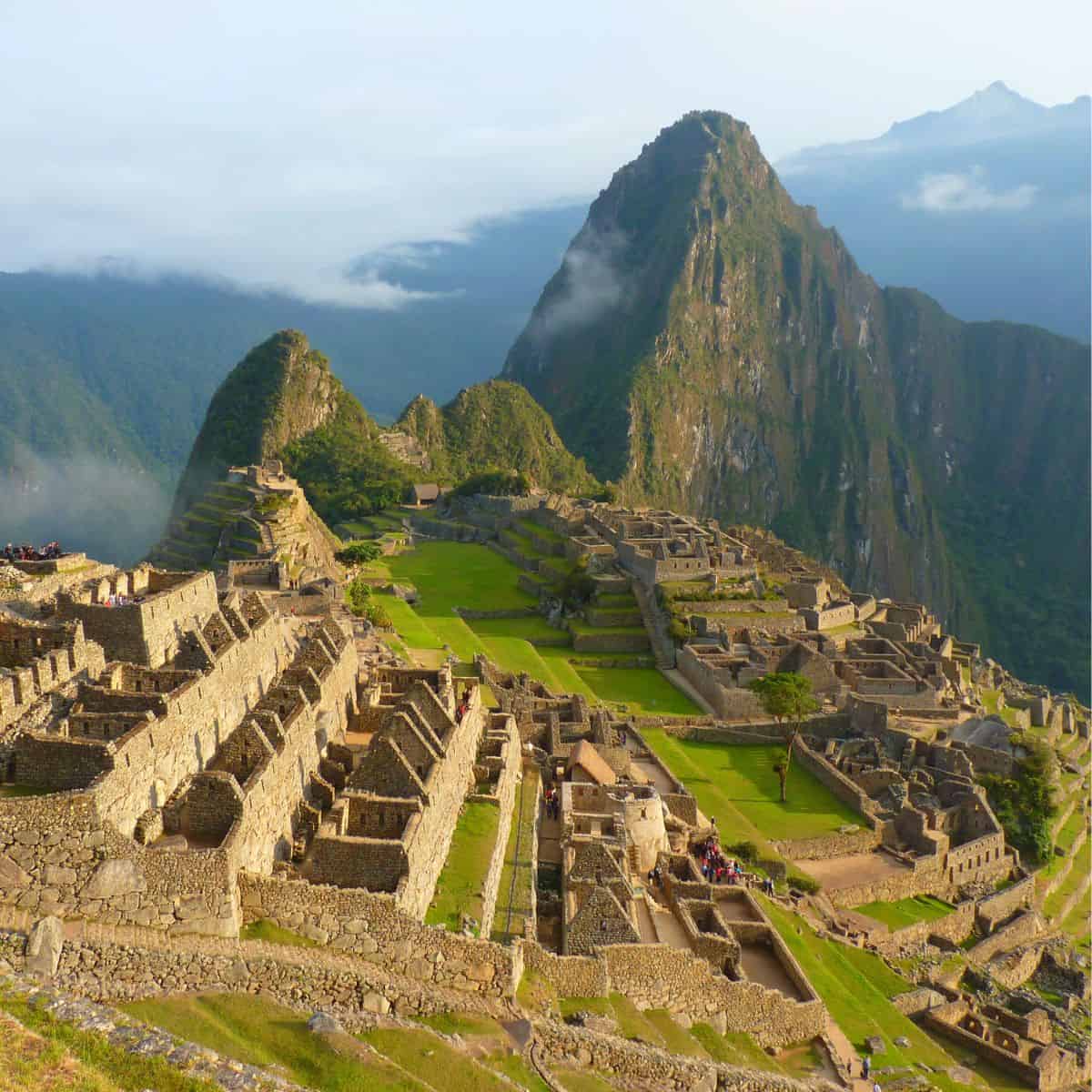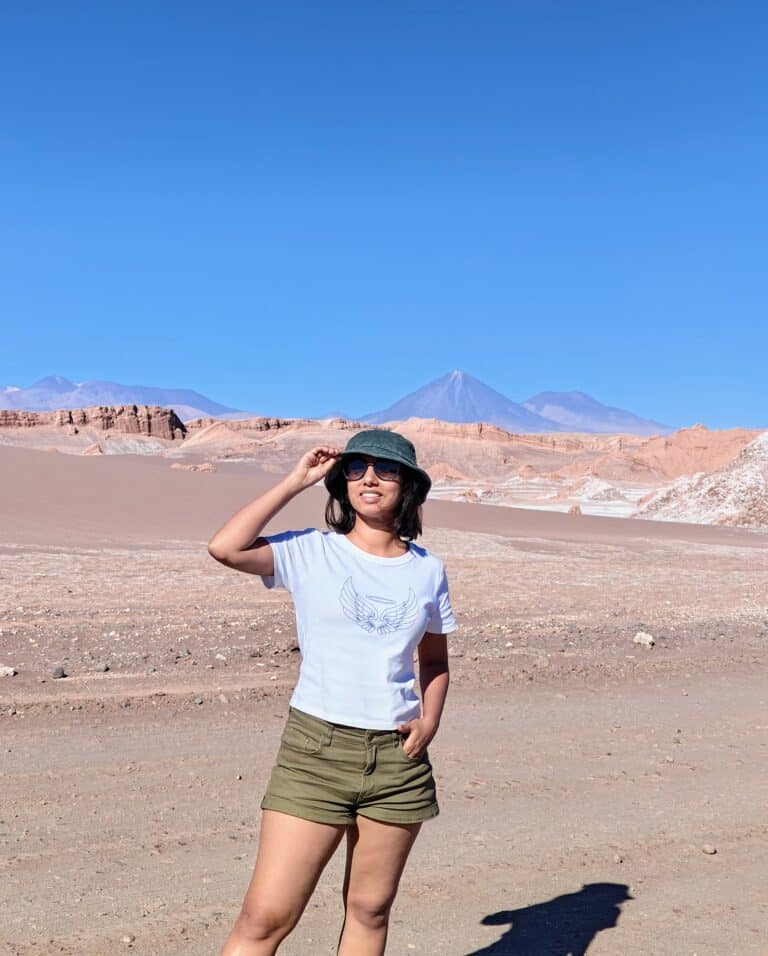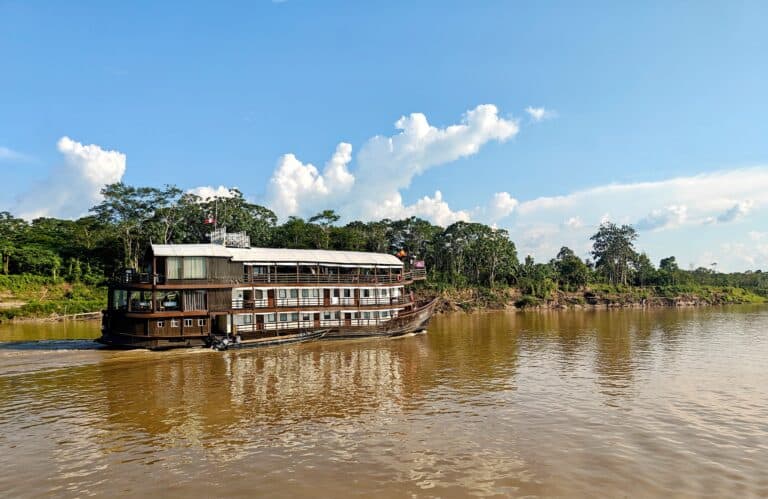Salkantay Trek to Machu Picchu: A 5-Day Journey Through Peru’s Sacred Andes
As I sit comfortably on the train to Machu Picchu with Ishi, this time trading hiking boots for Wi-Fi and a window seat, I can’t help but feel a wave of nostalgia. A decade ago, I tackled the Salkantay Trek to Machu Picchu with a group of close friends. It was my first real mountain adventure, and it remains one of the most transformative journeys I’ve ever taken.
Back then, we carried our own backpacks, camped under the stars, and powered through high-altitude passes on foot. Recently, during a month of remote work in Peru, we returned to Machu Picchu by train. It is an easier route, but it stirred vivid memories of the trek that first brought me here. If you’re up for a more immersive, off-the-beaten-path alternative to the Inca Trail, I still believe the Salkantay Trek to Machu Picchu is one of the best ways to earn your arrival.
In this blog, I’ll walk you through the full 5-day itinerary, share personal insights, and help you decide if this once-in-a-lifetime trek is for you.
Looking to pair your Salkantay adventure with another unforgettable Peruvian experience? Don’t miss our blog on the Best Amazon River Cruise: Ultimate 5-Day Itinerary You’ll Love!
Day 1: Cusco – Gateway to the Inca World

The Salkantay Trek to Machu Picchu begins long before you hit the trail and it starts with adjusting to Cusco’s altitude. Sitting at 11,000 feet (3,400m), Cusco is not just the launchpad for treks, it’s a city where the ancient and modern worlds blend seamlessly. The Plaza de Armas is surrounded by Spanish colonial architecture, yet the base of many of these structures still rests on the sturdy foundations built by the Incas.
On my first trip, our group spent a day in Cusco slowly wandering the streets, sipping coca tea, and trying to breathe normally after walking up a single staircase. We visited Qorikancha (Temple of the Sun), admired the Plaza de Armas, and took in the energy of San Blas. San Blas is a bohemian neighborhood that’s always buzzing with travelers and local artisans.
This acclimatization day is crucial. Don’t rush it. Spend it walking, hydrating, and mentally preparing for the journey ahead.
Day 2: Mollepata to Soraypampa – The Trek Begins

Our Salkantay Trek to Machu Picchu officially began with a drive to Mollepata, followed by a moderate hike to Soraypampa. The scenery was already stunning with green valleys framed by rugged Andean peaks, herds of alpacas dotting the hillsides and glimpses of Salkantay Mountain’s snow-capped summit teasing us from afar.
This first stretch eases you in. You’ll hike through lush valleys, pass local farms, and slowly gain elevation. By the time we reached our first campsite at Soraypampa (12,700 feet), the air was thinner and colder and the towering Salkantay peak watched over us like a silent guardian. The temperature plummeted as soon as the sun set and we gathered around a campfire. We sharing stories of the day’s hike and mentally preparing for what was to come.
Pro tip: If you have time, consider a short hike to Humantay Lake in the afternoon, its turquoise waters backed by glaciers are surreal.
Day 3: Soraypampa to Chaullay – Conquering the Salkantay Pass

This was, without question, the hardest and most awe-inspiring day of the entire Salkantay Trek to Machu Picchu. We woke before sunrise and began the slow, oxygen-thin climb to the Salkantay Pass, the highest point of the trek at 15,200 feet (4,650m). It was steep, cold, and at times punishing. We took countless breaks, motivated by the snow-draped peaks and the thought of what lay ahead. Reaching the top of the pass felt like a victory. The wind howled around us and the view from the top was simply indescribable.
Standing at the top, I remember a deep silence settling over us, the kind that only comes from pure wonder. Surrounded by glaciers, high-altitude winds, and the raw force of nature, we all felt deeply humbled. The descent brought relief and a radical change in landscape. From alpine barrenness to green hills and wildflowers, we began entering the edge of the cloud forest, eventually reaching Chaullay where we camped for the night.
Day 4: Chaullay to Lucmabamba – Into the Cloud Forest
If the previous day was about endurance, this one was about connection to nature, people, and flavor. The Salkantay Trek to Machu Picchu now meandered through the cloud forest which was warm, humid and vibrant with life. We passed small farms growing bananas, passionfruit, and coffee. Local families welcomed us in for tastings of freshly brewed Peruvian coffee and citrusy snacks.
We walked through dense vegetation under a jungle canopy, with waterfalls crashing beside us and the scent of wet earth hanging in the air. This was a softer, more sensory day. Our campsite, Lucmabamba, a small village nestled in the valley, felt like a tropical refuge after the cold mountain nights. We sat around a fire, sipping local coffee and sharing stories with the villagers, who welcomed us with open arms. It was a peaceful night, and as we lay in our tents, we could hear the sounds of the forest all around us.
Day 5: Lucmabamba to Aguas Calientes – The Final Push
The final day of trekking was filled with anticipation. We woke early, knowing that by the end of the day, we would be standing in Aguas Calientes, the gateway to Machu Picchu. The trail took us along a section of the original Inca trail, climbing up to Llactapata. It is an ancient Inca ruin that offers a distant view of Machu Picchu.

The climb to Llactapata was steep, but the promise of seeing Machu Picchu for the first time kept us going. When we reached the top, we were rewarded with a stunning view. There, in the distance, shrouded in mist and perched on the mountainside, was Machu Picchu.
The descent from Llactapata was long and winding, taking us through more cloud forests and along the train tracks that led to Aguas Calientes. Aguas Calientes, nestled in a deep valley along the Urubamba River, was a welcome sight after days of hiking. The town is a hub, with markets, restaurants and hotels catering to the thousands of visitors who pass through this ancient city. That night, we celebrated with a hot meal and a much-needed shower.
Day 6: Machu Picchu – The Ancient Citadel
We rose before dawn, choosing to hike up to Machu Picchu on foot instead of taking the tourist bus. The stone path wound steeply through the jungle in near-darkness, lit only by our headlamps and growing anticipation. And then that first glimpse. Machu Picchu revealed itself slowly in the morning light, its terraces glowing gold through the mist. It was as if we had stepped back in time, into a place that had remained untouched by the modern world. The terraces, temples, and plazas stretched out before us, their intricate stonework a testament to the ingenuity of the Inca civilization.

Once inside the gates, we spent the next few hours exploring the city. Machu Picchu is vast, and every corner holds a new wonder. The terraces, which cascade down the mountainside, were once used for agriculture, providing food for the city’s inhabitants. The precision of the stonework is mind-boggling, especially considering the tools the Incas had at their disposal. The Temple of the Sun, with its perfectly cut stones that align with the solstices, and the Intihuatana Stone, a ritual stone believed to have been used as an astronomical clock, were particularly striking.
As we wandered through the site, the scale of the city became apparent. The views from every angle were breathtaking, steep cliffs falling away to the deep valleys below, and the Urubamba River winding its way far below like a silver thread. Mist clung to the peaks, creating an ethereal atmosphere that felt otherworldly.
Ascent to Huayna Picchu
After exploring the main site, we made our way to the base of Huayna Picchu, the towering peak that rises sharply behind Machu Picchu. This final challenge was not for the faint-hearted. The trail up Huayna Picchu is notoriously steep, with narrow stone steps that have been carved into the mountainside. Some sections of the climb were so steep that metal cables had been installed to help climbers pull themselves up. The path was often just wide enough for one person, with steep drops off to the side and every step required careful attention. But the views were incredible. Every time we paused to catch our breath, we were rewarded with sweeping vistas of Machu Picchu.
Reaching the summit of Huayna Picchu was exhilarating. From the top, we had a bird’s-eye view of Machu Picchu, the terraces and stone structures laid out like a giant puzzle. The sense of scale from up here was humbling. The sight of the ancient city nestled in the mountains, surrounded by dense jungle and mist-shrouded peaks, was something I will never forget.
Descending Huayna Picchu was almost as challenging as the climb up. The narrow steps and steep drop-offs required careful footing, but the sense of accomplishment we felt made it all worthwhile. As we made our way back down into the main site of Machu Picchu, the mist had lifted, and the sun now bathed the ancient city in golden light.
Reflections of Our Epic Salkantay Trek to Machu Picchu
Looking back now, years after that life-changing trek, I can say with confidence that it offers something far beyond just beautiful views. It’s a journey of transformation, of resilience, and of connection to nature, to ancient history, and to yourself.
Even now, as I return by train and reflect from a comfortable seat, I carry that trek with me. Every step was earned. Every vista, unforgettable. If you’re considering visiting Machu Picchu and want to avoid the crowded Inca Trail, I can’t recommend the Salkantay route enough.



